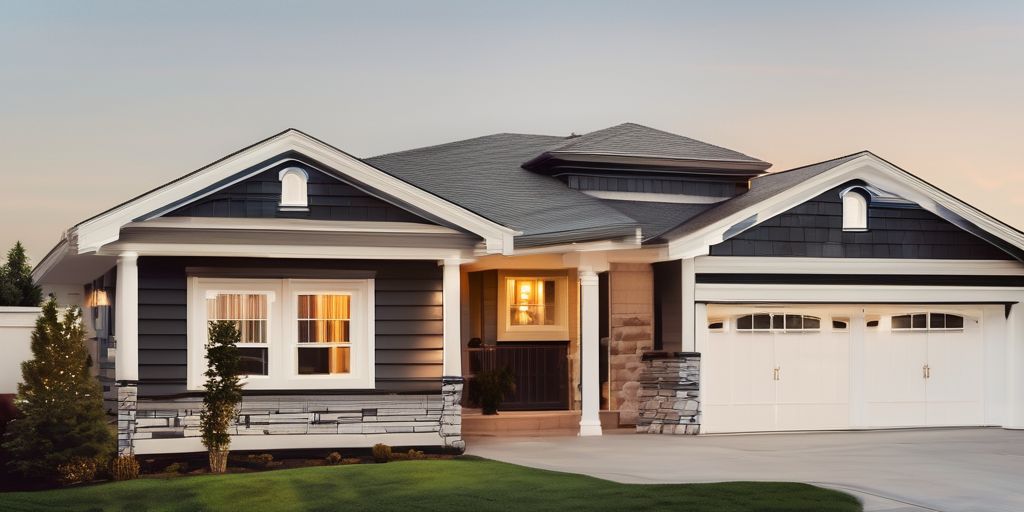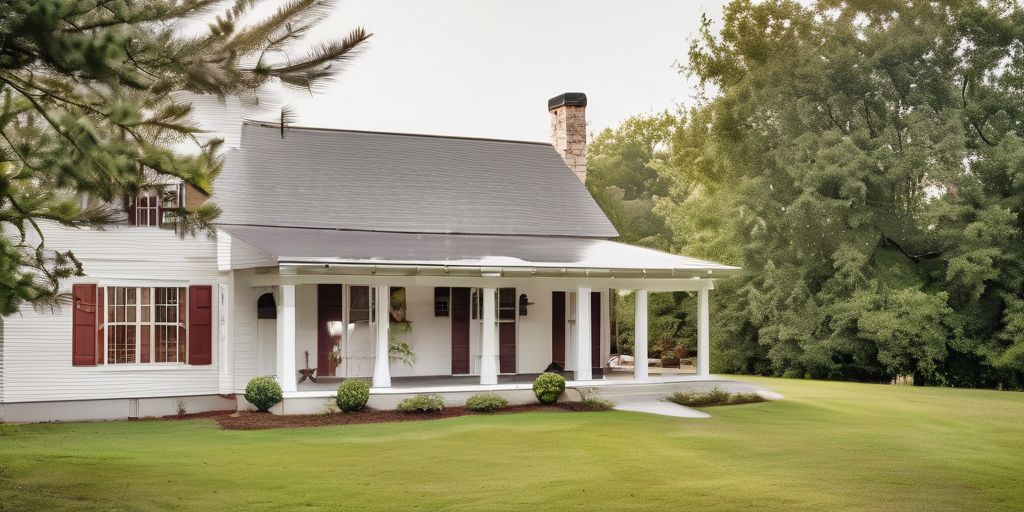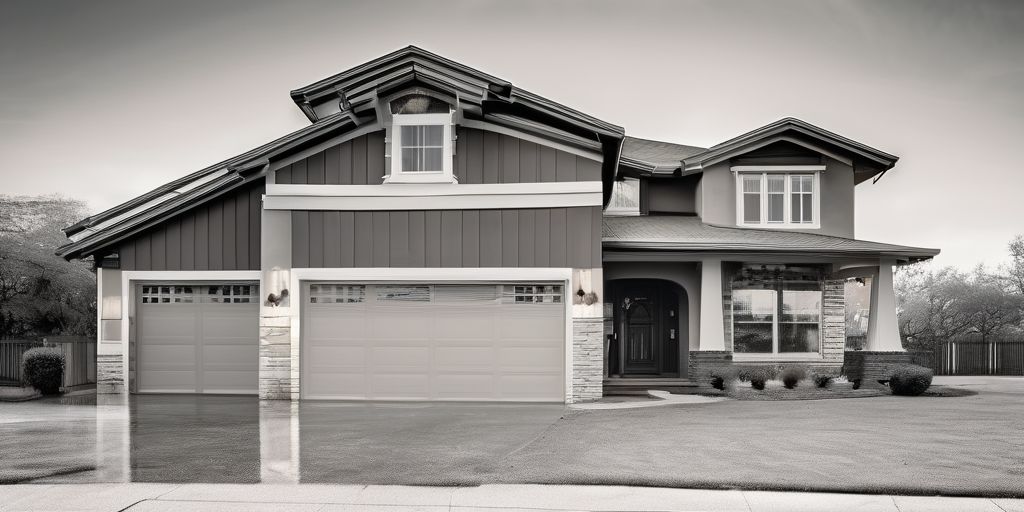Spray painting is a popular technique for revamping house exteriors in the Kitchener-Waterloo area, known for its precision and quick application. However, to achieve a professional finish, mastering the art of masking is crucial. This article delves into the essentials of masking for spray painting, from selecting the right materials to the intricacies of application and removal. We’ll explore various techniques, safety considerations, and the impact of environmental factors to ensure that your next spray painting project is not only efficient but also delivers exceptional results.
Key Takeaways
- Proper masking is vital for achieving precise edges and protecting surfaces during spray painting.
- Using the right type of masking materials and techniques can significantly enhance the quality of the paint job.
- Environmental factors such as wind, temperature, and humidity play a critical role in the spray painting process.
- Safety equipment is essential to protect the painter from inhaling fumes and to prevent paint overspray.
- Careful removal of masking materials and responsible disposal are important for a clean finish and environmental protection.
Understanding the Basics of Masking for Spray Painting
The Importance of Proper Masking
Proper masking is the cornerstone of a flawless spray painting job. Ensuring that non-painted surfaces are protected is crucial to achieving a clean, professional finish. Here are some key reasons why meticulous masking matters:
- It prevents overspray and paint bleed, which can mar adjacent surfaces.
- It saves time and resources by reducing the need for touch-ups and cleanups.
- It enhances safety by covering areas that could become slippery when painted.
When considering the Kitchener-Waterloo climate, with its variable weather, proper masking becomes even more essential to guard against the elements during a painting project.
Remember, the quality of your masking job directly impacts the final appearance of your paintwork.
Choosing the right materials for masking is just as important as the technique itself. A variety of supplies are available, such as masking paper, tapes, plastic film, and canvas drop sheets. Each material serves a specific purpose and selecting the appropriate one for your project is key.
Types of Masking Materials
Selecting the right masking materials is crucial for achieving a clean and precise finish when spray painting house exteriors. Here are some commonly used materials:
- Painter’s tape: This is a staple in masking for its ease of use and clean removal. It comes in various widths to suit different needs.
- Plastic sheeting: Often used to cover larger areas, such as windows or doors, to protect from overspray.
- Masking paper: Ideal for covering smaller surfaces and can be easily cut to size.
- Drop cloths: Essential for protecting the ground and landscaping from paint drips and spills.
It’s important to choose materials that are durable and flexible to withstand the painting process. For instance, a high-quality painter’s tape should adhere well to surfaces without leaving residue upon removal. Additionally, when working on house exteriors in areas like Kitchener-Waterloo, consider the local environment. For example, the proximity to the Grand River may affect humidity levels, which can in turn influence the adhesiveness of masking materials.
When masking, always ensure that the materials are applied smoothly and without gaps to prevent paint bleed-through.
Remember, the goal is to protect adjacent areas and achieve sharp paint lines for a flawless finish. Proper masking also contributes to overall quality control during the painting process.
Preparing Surfaces for Masking
Before applying any masking materials, it’s crucial to ensure that the surfaces are clean and free from debris. Proper preparation of surfaces is key to achieving a flawless finish after spray painting. Here’s how to prepare your surfaces effectively:
- Clean the surface with a mild detergent and water to remove any dirt, dust, or grease.
- Dry the surface thoroughly to prevent any moisture from getting trapped under the tape.
- Repair any cracks or holes to ensure the masking tape adheres properly.
- Sand any rough areas to create a smooth base for painting.
Remember, the time spent on preparation can significantly impact the quality of your final paint job.
When dealing with textured surfaces, special attention is needed to ensure that the masking tape can seal properly against the irregularities. For areas near window frames, it’s important to cover the glass and seals to protect them from overspray.
In the Kitchener-Waterloo region, where weather can be unpredictable, checking the forecast before starting your project can save you from the hassle of dealing with sudden weather changes during the preparation phase.
Techniques for Effective Masking
Step-by-Step Guide to Masking
Masking is a critical step in ensuring a clean, sharp finish when spray painting the exterior of a home. Here’s a simple guide to help you mask effectively:
- Clean the surfaces to be painted to remove any dirt, debris, or peeling paint. This ensures the masking tape adheres properly.
- Choose the right masking tape for the surface and conditions. Different tapes have varying levels of adhesion and ease of removal.
- Apply the tape carefully along the edges where paint is not desired. Press down firmly to prevent paint from seeping underneath.
- Cover larger areas with drop cloths or plastic sheeting, securing the edges with tape.
- For windows and doors, use paper or plastic covers specifically designed for these features.
- Inspect the masked areas to ensure all edges are sealed and there are no gaps.
Remember, taking the time to mask thoroughly will save you from time-consuming touch-ups later.
After completing the masking process, you’re ready to begin the spray painting. With the right preparation, you can achieve a professional-looking finish that enhances the beauty of the home’s exterior. And while you’re up on the ladder, take a moment to admire the view of the Grand River—a lovely sight in the Kitchener-Waterloo region.
Tips for Masking Complex Shapes
Masking complex shapes requires patience and precision to ensure a clean, sharp finish. Here are some tips to help you tackle these challenges:
- Use smaller pieces of tape to conform to curves and angles. This allows for greater flexibility and a tighter fit.
- When dealing with intricate designs or patterns, create a template with paper or thin plastic. Trace the shape onto your masking material for an accurate cut.
- For optimal adhesion and finish quality, it’s crucial to choose the right primer, especially in varying weather conditions.
Remember, the goal is to protect adjacent areas from overspray, particularly when working on window frames or other detailed features.
By following these guidelines, you’ll achieve a professional-looking result that highlights the beauty of the structure without any unwanted paint on surrounding surfaces.
Ensuring a Tight Seal: Tricks of the Trade
Achieving a tight seal is crucial when masking for spray painting, as it prevents paint bleed and ensures sharp lines. Here are some tricks of the trade to help you master this skill:
- Ensure surfaces are clean and dry before applying any masking materials. Any dust or moisture can compromise the adhesive quality of the tape.
- When applying tape, use a putty knife or a dedicated smoother to firmly press down the edges. This action helps in sealing the tape against the surface.
- Overlap tape edges by at least half an inch to avoid gaps where paint can seep through.
Remember, a tight seal not only protects the areas you don’t want to paint but also contributes to a professional-looking finish.
For areas with intricate designs or irregular shapes, consider using a combination of masking tape and paper or plastic sheeting to conform to the surface. It’s also beneficial to check the seal periodically throughout the project, especially if you’re working in variable weather conditions, such as those sometimes experienced in the Kitchener-Waterloo region.
- Use the right size of tape for the job. Wider tape can cover larger areas and provide better edge protection.
- After painting, remove the tape at a 45-degree angle to the painted surface for the cleanest line.
Choosing the Right Tape and Protective Gear
Comparing Different Masking Tapes
When preparing for a spray painting project on house exteriors, selecting the right masking tape is crucial for achieving clean lines and protecting surfaces. Here’s a brief comparison of the general types of masking tapes used in painting:
- General-purpose masking tape: This is the most common type of tape used for holding down drop cloths and masking off trim. It has a moderate adhesive strength that usually doesn’t leave a residue if removed promptly.
- Painter’s tape: Specifically designed for painting jobs, painter’s tape comes in various widths and provides a clean edge for paint lines. It adheres well to surfaces without causing damage when removed.
- High-temperature masking tape: Used for projects that require exposure to higher temperatures, this tape can withstand the heat without losing its adhesive properties or leaving a sticky residue.
It’s important to consider the surface you’re working on and the weather conditions. For example, a tape that works well on a sunny day may not hold up in the unpredictable weather of Kitchener-Waterloo, where a sudden rain shower near Victoria Park can change your plans.
Each type of tape has its own set of characteristics that make it suitable for different tasks and conditions. Always test a small area first to ensure the tape adheres properly and doesn’t damage the surface upon removal.
Safety Equipment for Spray Painting
When undertaking a spray painting project, especially as an exterior painter, safety should be your top priority. Proper safety gear is essential to protect yourself from the inhalation of fumes and from paint overspray.
- Respirators: A high-quality respirator is crucial for filtering out paint particles and fumes.
- Goggles: Protect your eyes from harmful chemicals and debris with safety goggles.
- Gloves: Use nitrile or latex gloves to keep your hands clean and chemical-free.
- Coveralls: Disposable or washable coveralls will protect your clothing and skin.
Remember to always check the fit and condition of your safety gear before starting your project to ensure maximum protection.
Additionally, it’s important to prepare spray painting equipment as per manufacturer’s instructions, test spray pattern, adjust pressure, clean nozzles, and consider weather conditions. Use protective measures for a neat work environment. Conduct a site assessment and preparation, and calibrate equipment for efficient coverage. Choosing the right spray painting equipment with essential features and prioritizing safety measures is crucial for achieving quality results in projects.
How to Protect Adjacent Areas
When undertaking a spray painting project on house exteriors, it’s crucial to protect the adjacent areas to prevent overspray and unintended paint application. Proper shielding of surrounding surfaces is essential for achieving a professional finish and maintaining the cleanliness of the site.
- Use drop cloths or plastic sheeting to cover large areas such as driveways or patios.
- Apply painter’s tape along the edges of the area you’re painting to create a crisp line and protect the underlying surface.
- For plants and landscaping, use lightweight fabric covers that allow for air circulation while keeping paint droplets at bay.
Remember, preparation and organization are key for a successful paint job. Gather all necessary materials and set up your workstation with safety and protection in mind.
Practicing on less visible areas before tackling the main project can ensure consistent coverage and help you refine your technique. Keep your tools organized for an efficient workflow, which not only enhances safety but also fosters creativity in your projects.
The Role of Weather and Environment
Dealing with Wind and Temperature
When spray painting the exterior of a house, wind and temperature play crucial roles in the outcome of your project. Here are some key considerations:
- Wind:
- Avoid spray painting on windy days to prevent overspray and uneven application.
- Use wind barriers or adjust the spraying technique to minimize the impact of gusts.
- Temperature:
- Paint adheres best within a specific temperature range, typically between 50-90 degrees Fahrenheit.
- Extreme heat or cold can affect drying times and paint consistency.
Remember, the local climate in Kitchener-Waterloo can be variable, so always check the forecast before beginning your project.
For brick houses in the area, it’s essential to choose a day with mild weather to ensure the paint adheres properly and provides a durable finish. Similarly, when working with vinyl siding, selecting a paint that can withstand the fluctuations in temperature will yield the best results.
Humidity Considerations
When tackling the task of spray painting house exteriors, understanding the impact of humidity is crucial. High humidity levels can severely affect the drying time and finish quality of paint. Here are some key considerations:
- Timing: Aim to paint on days with lower humidity levels. Early morning or late evening can offer the best conditions as humidity tends to be lower.
- Ventilation: Proper airflow is essential in humid climates to facilitate drying. Ensure that the area is well-ventilated.
- Drying Time: Paint takes longer to dry in humid conditions. Allow extra time before removing any masking materials to avoid smudging.
Remember, patience is key when painting in a humid environment. Rushing the process can lead to a less than satisfactory finish.
In the Kitchener-Waterloo area, where weather can be unpredictable, it’s important to monitor the local humidity levels and plan your painting project accordingly. For instance, painting near the Grand River on a day with high humidity might require additional drying time due to the proximity to water.
Timing Your Project: Best Practices
When planning for exterior spray painting, timing is crucial to ensure the paint adheres properly and dries evenly. Here are some best practices to consider:
- Monitor the weather forecast closely to select the optimal day for painting. Look for a stretch of days with consistent weather conditions.
- Avoid painting on extremely hot or cold days. Paint can dry too quickly in heat, or too slowly in cold, affecting the finish.
- Humidity levels should be moderate. High humidity can prolong drying times and affect paint quality.
Remember, the time of day is also important. Aim to start early in the morning to take advantage of the cooler temperatures and lower wind speeds.
- Plan for sudden weather changes by having covers and tarps ready to protect wet paint.
- Use additives in your paint if necessary to adjust for temperature and humidity on the day of application.
Cleanup and Finishing Touches
Removing Masking Materials Safely
After the spray painting task is complete, the removal of masking materials is a critical step to ensure a clean and professional finish. Here are some guidelines to follow:
- Gently peel off the masking tape at a 45-degree angle to avoid damaging the freshly painted surface.
- Check for any residue left by the tape and gently clean it using a mild solvent if necessary.
- Inspect the edges for any paint bleeds and use a small brush for touch-ups.
Remember, patience is key when removing masking materials to maintain the integrity of the paint job.
It’s also important to consider the disposal of used materials. Here’s a simple breakdown:
- Collect all the masking tape and plastic sheeting.
- Separate materials that can be recycled.
- Dispose of the waste according to local regulations in Kitchener-Waterloo.
In areas with moisture issues, like brick houses in Kitchener-Waterloo, ensuring that the surface is completely dry before removing the tape is crucial. For tasks like painting plastic siding, it’s essential to remove the tape before the paint is fully cured to achieve a sharp edge.
Touching Up Edges and Mistakes
Even with the most careful preparation and application, imperfections can occur when spray painting house exteriors. Touching up edges and mistakes is a crucial step to ensure a polished final appearance. Here are some tips to help you correct any issues:
- Inspect the painted area: Once the paint has dried, carefully examine the edges and surfaces for any overspray, drips, or uneven lines.
- Prepare for touch-ups: Gently sand any imperfections with fine-grit sandpaper to create a smooth surface for repainting.
- Use a small brush: For precision, apply paint with a small artist’s brush or a touch-up pen to neatly cover any mistakes.
Remember, patience is key when performing touch-ups. Rushing the process can lead to more noticeable repairs.
It’s also important to consider the type of paint used for the initial application. Some paints may require a specific thinner or technique for effective touch-ups. Always follow the manufacturer’s recommendations for the best results.
Disposing of Used Materials Responsibly
After the completion of a spray painting project, it’s crucial to properly dispose of paint cans, brushes, and solvents. This not only keeps the worksite clean but also ensures compliance with local waste disposal regulations. In Kitchener-Waterloo, these regulations are designed to protect our natural landmarks, such as the Grand River, from contamination.
- Ensure that all paint cans are emptied and dried before disposal.
- Clean brushes and equipment using appropriate solvents, and never pour these down the drain.
- Collect used masking materials and drop cloths for proper sorting and recycling if possible.
Regular maintenance of your painting equipment can prevent hazards like mold and mildew, and extend the life of your tools.
Remember, responsible disposal is not just about following the law; it’s about respecting our community and environment. By taking the time to dispose of materials correctly, you contribute to the overall well-being of the Kitchener-Waterloo area.
As you put the final touches on your home improvement project, remember that a fresh coat of paint can make all the difference. At We Paint Siding, we specialize in giving your home’s exterior the attention it deserves. With our expertise in painting siding, soffits, eaves, trims, doors, and more, we can transform your property and increase its curb appeal. Don’t wait until our season is fully booked—head over to our website now to book your free estimate and explore our incredible before and after images. Let us help you make your house feel like new again with our 10-Year Guarantee on quality and durability.
Wrapping Up: Mastering Masking for Spray Painting in Kitchener-Waterloo
As we’ve explored the intricacies of masking for precise spray painting on house exteriors in Kitchener-Waterloo, it’s clear that a meticulous approach can significantly enhance the final outcome. Whether you’re a DIY enthusiast or a professional painter, the right techniques and materials are crucial for achieving sharp lines and protecting surfaces from overspray. Remember, patience and attention to detail are your best allies in this process. With the tips and tricks outlined in this article, you’re now equipped to tackle any spray painting project with confidence. Happy painting, and may your edges always be crisp and clean!
Frequently Asked Questions
Why is proper masking crucial for spray painting house exteriors?
Proper masking is essential to ensure clean, sharp lines and to protect areas from overspray. It helps achieve a professional-looking finish and saves time on cleanup.
What are the best types of masking materials to use for outdoor spray painting?
The best masking materials for outdoor spray painting are painter’s tape designed for exterior use, durable plastic sheeting, and masking paper that can withstand outdoor conditions.
How should surfaces be prepared before applying masking materials?
Surfaces should be clean, dry, and free of dust or debris. Any loose paint or rust should be scraped off, and repairs should be made to ensure the masking materials adhere properly.
What safety equipment is necessary when spray painting outdoors?
Safety equipment for outdoor spray painting includes a respirator mask, safety goggles, gloves, and protective clothing to shield against paint fumes and overspray.
How can weather conditions affect outdoor spray painting and masking?
Weather conditions such as wind, temperature, and humidity can affect paint application and drying times. It’s important to choose a calm, dry day with moderate temperatures for best results.
What is the proper way to remove masking materials after spray painting?
Masking materials should be removed carefully once the paint is dry to the touch but not fully cured. Pull the tape back on itself at a 45-degree angle for a clean edge.










